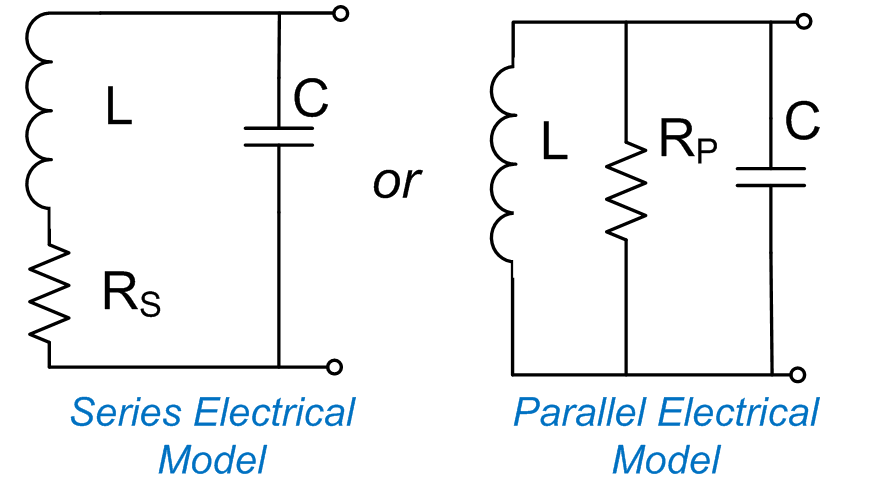SNOA930C March 2015 – May 2021 LDC0851 , LDC1001 , LDC1001-Q1 , LDC1041 , LDC1051 , LDC1101 , LDC1312 , LDC1312-Q1 , LDC1314 , LDC1314-Q1 , LDC1612 , LDC1612-Q1 , LDC1614 , LDC1614-Q1 , LDC2112 , LDC2114 , LDC3114 , LDC3114-Q1
1.2 RS and RP
An inductive sensor is intrinsically lossy due to series losses in the conductor used to construct the inductor. These resistive losses mainly come from two sources – the energy dissipated in the target or other nearby conductors, and the distributed losses from the conductive windings of the inductor. When measuring RP, the intention is to measure only the eddy current losses on the target. The distributed losses in the sensor reduce the measurement dynamic range of the LDC. Even when measuring inductance (L only) with an LDC131x or LDC161x device, higher losses reduce the measurement accuracy.
Users can represent this loss electrically in one of two ways – as a series model or a parallel model, as shown in Figure 1-2. In the series representation, the higher RS, the more parasitic losses and the more energy the LDC needs to drive into the sensor to maintain oscillation. This model matches the physics of the system more closely than does the parallel model.
The parallel model is easier to determine what sensor current is needed to for a given sensor peak voltage. With the parallel model, it is clear that if RP is too low it attenuates the sensor oscillation. If the RS becomes too high (which is the same as the RP becoming too low), the LDC may not be able to effectively drive the sensor, resulting in increased noise or even a collapse of the sensor oscillation.
The RP can be calculated from the RS with:
RP = L / (RSC) = (2πƒSENSORL)2/RS
From previous equation, it is clear that the RP is a function of the sensor frequency and the sensor inductance. The lowest sensor RP that occurs in the system must be within the LDC drive capabilities.
 Figure 1-2 RS and RP
Figure 1-2 RS and RP